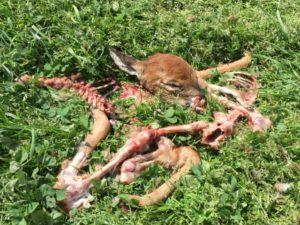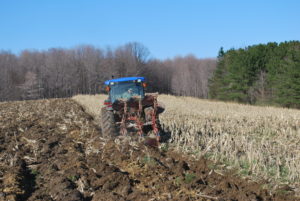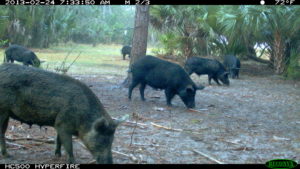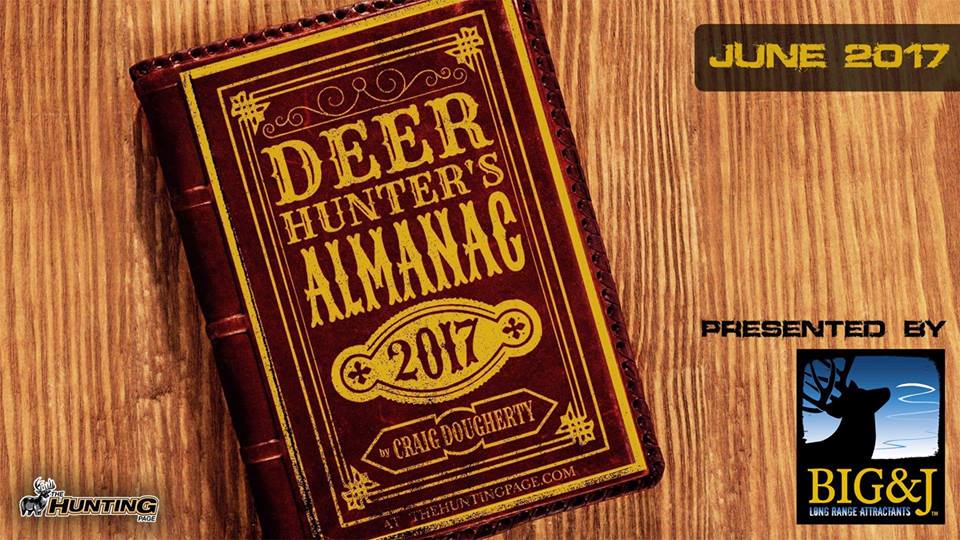June Deer Hunting Almanac: Essential Guide for Deer Hunters
This popular post was originally published mid-June in 2017. ‘Deer Hunter’s Almanac’ was created by Craig Dougherty with help from Jason Ashe for the Hunting Page. June’s Guide for Deer Hunters.
June
Two hundred days before June 1 put us in the peak of last year’s rut, (mid- November). Roughly 80% of this year’s whitetail deer fawns on the ground right now, the rest will probably be dropped in two weeks. All of this year’s fawns will be born by the fourth of July (or almost all). This is the time of replenishment, the time when the deer herds are made whole once more, fawns bring smiles of well-being and satisfaction, the hunter is transformed to the protector. All the fawns won’t make it into hunting season but the majority of them will, deer numbers are at a high for the year, they will decline from this point on.

Whitetail Deer in June
The key to keeping fawns alive through their first two weeks of existence is providing good fawning cover. Thick, dense cover hides fawns, repels predators, and feeds momma.
- The key to producing a healthy fawn crop is high-quality habitat, and that includes food.
- A doe with healthy nutrition will raise healthier fawns.
- Fawns born in open woods or bare fields are more vulnerable than fawns dropped in thickets.
- Predators can have a huge impact on the fawn crop, black bears, coyotes, and bobcats are the principal predators.
- Hunting and trapping predators is best done by professionals that can rid the area of predators prior to fawn season.
Woods Work
- An adult deer will consume roughly 8-10 pounds of food per day. In general, you will need at least 1 ton of deer food to sustain a deer for a single year.
- June is pretty much the last month to get your spring planting done. Dry conditions will be upon us in July and spring-planted perennials will need multiple months to mature.
- Natural vegetation plays a very important role in quality habitat equation. Natural vegetation (leaves, shoots, stems weeds and wild plants) makes up the majority of the food used by deer in most environments.
- Food plots produce about a ton of highly nutritious food per acre per year.
- Native vegetation varies greatly in how much edible forage it supplies. Woodlots will produce roughly 50-250 lbs. of deer food per acre per year, Abandoned weed fields and CPR fields can readily produce 1,000 lbs. per acre.
- Agricultural crops like soybeans, corn, and beets can produce as much as 10 tons of forage per acre. Food plots and mineral stations are one component of a healthy habitat but far from the total solution.
- Mineral and feed stations are limited only by the amount of product made available and the number of deer using the station, and how often, no weather issues here, no green thumbs required.

Food plots produce about a ton of highly nutritious food per acre per year. Here we are tilling up the soil to plant.
- Enhancing native vegetation is within the ability envelop of most hunters, you don’t have to be a farmer or agronomist to improve native vegetation.
- Tillage equipment is mandatory if planting is to be undertaken, so are soil tests and soil amendments like lime and fertilizer.
- An enormous amount of habitat can be created with a chainsaw and the necessary safety gear (hard hat, eye protection, protective chaps, gloves and boots.
Hunting-365
Summer is a good time to sharpen your shooting skills, get after those feral hogs before they wipe you out. Skip the corn piles, and check out a proven hog attractant available from http://www.bigandj.com/ they work better and are easier to use. If you don’t have those miserable hogs, how about shooting some varmints or paper, it’ll make a difference this fall. If you hunt from box blinds, now is the time to get them in place so the deer are used to them by October, the same goes for portable tree stands.
It takes a year to build a young hunter, this is the time to begin the process, get out those bows and .22’s. Set plenty of cameras and take the kids with you. It’s not too early to check whether your fruit producers will be feeding deer come fall. Fertilized blossoms will show swelling and the beginnings of young fruit.



















![The Best Deer Camp Chili [VIDEO] Deer Chili Ingredients, Tomatoes, Chili Spices](/wp-content/uploads/2015/10/Deer-Chili-Deer-Camp-Recipe-218x150.jpg)
![How to Call Elk Early in the Season [VIDEO]](/wp-content/uploads/2016/08/byers003-218x150.jpg)




![Idiots Disturb Hunter: How Would You Have Handled It? [VIDEO]](/wp-content/uploads/2015/10/DSC00110-e1474487693878-100x70.jpg)
![Albino Buck Shocked to Shed His Antlers [VIDEO]](/wp-content/uploads/2015/10/AlbinoDeer-100x70.jpg)